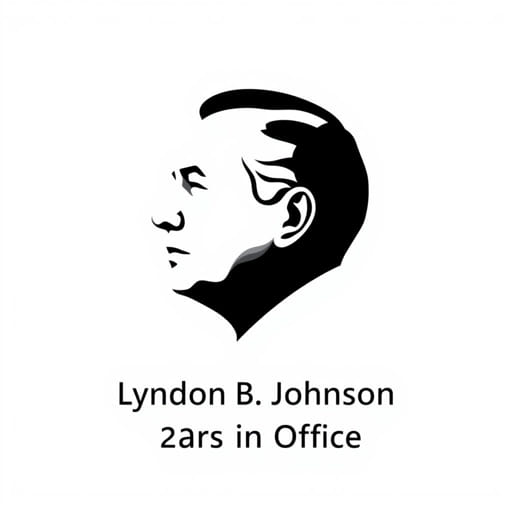Years In Office Lyndon Johnson
When discussing the years in office of Lyndon B. Johnson, one must take into account not only his time as President of the United States but also his earlier political career. Johnson’s leadership spanned some of the most pivotal years in 20th-century American history, including the Civil Rights Movement, the Vietnam War, and the Great Society programs. His presidency was marked by intense domestic reforms and international challenges, shaping the legacy of his time in office. Understanding the timeline of Lyndon Johnson’s years in office allows us to better appreciate the historical developments that occurred under his leadership and how they continue to affect American society today.
Early Political Career
Entering Congress
Lyndon B. Johnson began his national political career in 1937 when he was elected to the U.S. House of Representatives as a Democrat from Texas. He served in the House from 1937 until 1949. During this period, Johnson built a reputation as a strong supporter of President Franklin D. Roosevelt’s New Deal policies, which aimed to lift the country out of the Great Depression.
Moving to the Senate
In 1948, Johnson won election to the U.S. Senate in a highly controversial and narrowly decided race. He officially took office as a senator in January 1949. Over the next several years, Johnson gained influence in the Senate and was named Senate Majority Whip in 1951. By 1955, he became the Senate Majority Leader, a position he held until 1961. During his time in the Senate, Johnson was known for his mastery of legislative processes and ability to build coalitions.
Vice Presidency (19611963)
Serving Under John F. Kennedy
Lyndon B. Johnson became Vice President of the United States in January 1961 after being selected as the running mate of John F. Kennedy. The Kennedy-Johnson ticket won the 1960 election, defeating Republican Richard Nixon. As Vice President, Johnson had a limited role, which was typical for vice presidents at the time, but he remained deeply involved in legislative affairs and represented the administration on international trips.
Presidency Begins: 1963
Tragedy and Transition
On November 22, 1963, President John F. Kennedy was assassinated in Dallas, Texas. Just hours after the tragedy, Lyndon B. Johnson was sworn in as the 36th President of the United States aboard Air Force One. This sudden transition marked the beginning of Johnson’s presidency, which would last until January 1969.
Full Presidential Term: 1964 Election and Aftermath
Winning His Own Mandate
In 1964, Johnson ran for a full presidential term. He won a landslide victory against Republican challenger Barry Goldwater, securing more than 61% of the popular vote. This overwhelming win gave Johnson the political capital needed to pursue an ambitious domestic agenda.
The Great Society
Between 1965 and 1967, President Johnson introduced a series of sweeping domestic reforms under the label Great Society. These programs aimed to eliminate poverty and racial injustice and expanded federal involvement in education, healthcare, and urban development. Major legislation passed during this time includes:
- The Civil Rights Act of 1964
- The Voting Rights Act of 1965
- Medicare and Medicaid (1965)
- Elementary and Secondary Education Act (1965)
- War on Poverty initiatives like Head Start and Job Corps
The Vietnam War and Declining Support
Escalation and Protest
While Johnson’s domestic programs were transformative, his foreign policy especially regarding Vietnam overshadowed much of his presidency. He greatly increased the number of American troops in Vietnam after the Gulf of Tonkin incident in 1964. By the late 1960s, opposition to the Vietnam War grew rapidly, sparking protests across the country. The prolonged conflict caused deep divisions in American society and significantly damaged Johnson’s approval ratings.
Choosing Not to Run Again
On March 31, 1968, in a televised address, Johnson shocked the nation by announcing he would not seek re-election. He cited the growing divisions in the country and his desire to focus on achieving peace in Vietnam as reasons for stepping away from the campaign trail. This decision meant that Johnson’s time as president would end on January 20, 1969.
Final Year and Legacy
Leaving Office
Johnson served out the remainder of his term while attempting to negotiate peace in Vietnam. He handed over the presidency to Richard Nixon in January 1969. After leaving office, Johnson retired to his Texas ranch and published his memoirs. He died just four years later, in 1973.
Impact of Johnson’s Years in Office
Johnson’s presidency was one of the most consequential in American history. His efforts in civil rights and social reform permanently changed the role of the federal government. Although his legacy is mixed due to the Vietnam War, many of his domestic achievements continue to shape American life today.
Summary of Lyndon Johnson’s Years in Office
Timeline Overview
- U.S. House of Representatives: 19371949
- U.S. Senate: 19491961
- Vice President: January 20, 1961 November 22, 1963
- President: November 22, 1963 January 20, 1969
Historical Significance
The years Lyndon Johnson spent in office especially as President were transformative. He presided over landmark civil rights legislation, introduced vital social programs, and navigated one of America’s most controversial wars. Johnson’s legacy continues to spark debate, but his influence on American history remains undeniable. His years in office represent a time of dramatic change and challenge for the United States.
